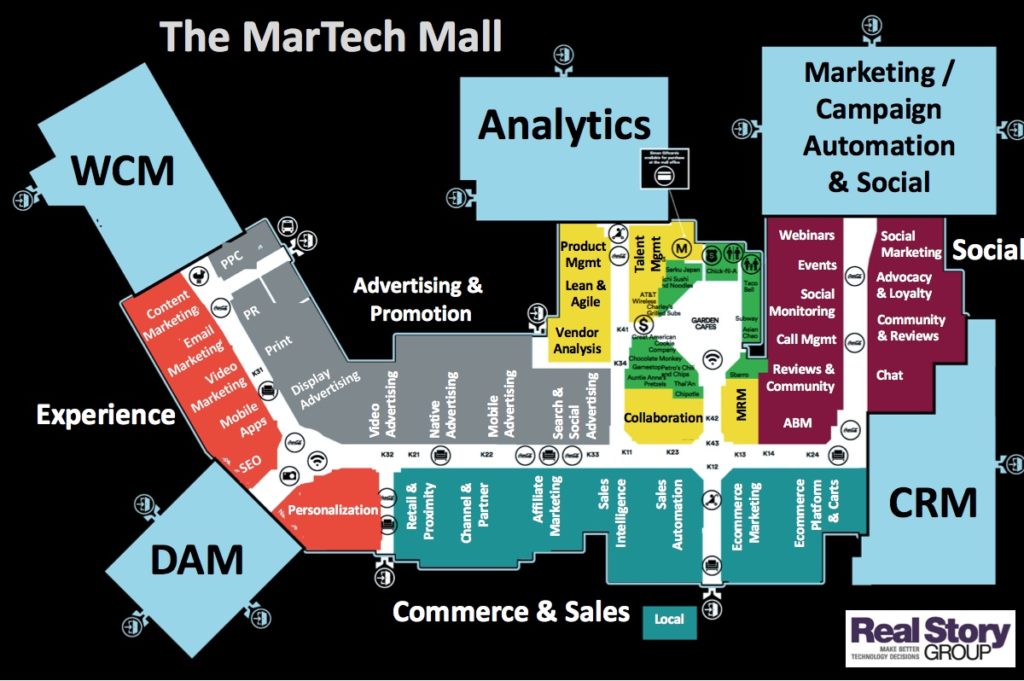This is a guest post by Fab Capodicasa, Managing Director of Hoosh Marketing.
When choosing a marketing automation platform (MAP), how are you comparing your options?
- Are you looking at features and functions?
- Are you comparing brand vs. brand?
- Are you making a decision based on user reviews?
In other words, are you buying a MAP the same way you would buy a car?
The car analogy for MAPs is still a popular one. While it made sense 10 years ago, we’ve since entered the Golden Age of MarTech. Today, your MAP is just one platform (albeit a critical one) in an increasingly complex MarTech stack.
But the increasing complexity of your organization’s MarTech stack is just one issue with the car approach. Fundamentally, even an ‘out-of-the-box” MAP isn’t like a car; you can’t just drive it off the lot. It still requires deep customization such as custom data models.
Nowadays, too, there’s the issue of integration. Your MAP must be integrated with at least 2-3 other systems—at a minimum, your CRM and your CMS. And with the rise of CDPs, your MAP may soon not even be the most important component of your MarTech stack.
So how should you think about your MAP?
Design Your MarTech Stack Like a Shopping Centre
The more accurate analogy is to look at your MAP as an “anchor store” in a shopping center, where the shopping center is your MarTech stack. Yes, the MAP is important—but it’s just one “store” your users will visit during an average work day.

“Arising in the 1950s, shopping malls would come to vary in shape and size, but they almost always had a particular configuration: anchor tenants connected by boutique or niche stores,” writes Scott Brinker. “Similarly, in your MarTech stack, you have anchor platforms surrounded by a growing array of smaller players.”
Your MAP is just like one such anchor store. If an anchor store in a mall has poor access to other common services (parking, public transport, toilets, and so on) and other stores, it will fail to serve shoppers—and whole shopping center will suffer.
The same is true of your MAP.
“Malls became popular because shoppers could park conveniently and traverse them easily. Alas, the data moving across our MarTech systems does not move so readily. It’s like the open atrium has doors and locks and other obstructions. In an ideal MarTech mall, our marketers, data, and content would easily flow among systems. Few of us can claim that now,” Brinker continues.
This is exactly why selecting a MAP is now more complex than simply choosing between two tools. Instead, you have to consider your anchor in the context of the overall shopping center (i.e. your MarTech stack) and the needs of shoppers (i.e. your users).
The Best Malls Have Thoughtful Architects
Proposing, conceiving, and designing a shopping center is a very rigorous process: architecture, or “the art or practice of designing and constructing buildings.”
Usually, a MarTech stack is constructed in exactly the opposite way: it’s a hodge-podge, organic collection of apps without much thought given to big-picture concerns like sustainability or how all the pieces fit together.
It makes sense to do an architecture exercise before you go select your anchor store (i.e. your MAP). This approach makes it much easier to select an anchor which fits your overall marketing needs—and means it’s less likely that you’ll end up with a so-called “franken-stack.”
Read more about how to think like a marketing architect >
Let’s examine some concrete examples of how considering the features/functions of a MAP within the wider context can change how you determine which MAP is best for you. Here are some common criteria used to evaluate MAPs.
Attribution and ROI
In this category, whichever MAP has better capabilities in attributing marketing activities to revenue might seem like the clear winner. However, if you were using (or considering using) a dedicated attribution platform such as Bright Funnel or Bizable, attribution capabilities would be less of a concern.
Building and Personalizing Emails
You might be tempted to select whichever MAP has a better native email editor. But if you’re already using or considering a dedicated email creation tool—such as Knak or Hoosh ETB—it wouldn’t matter as much.
CRM Lead Integration
When it comes to lead integration, you need to consider whether a potential MAP has deep, rich integration with your CRM. If you were using an integration platform such as Workato, however, this isn’t an important factor.
Landing Pages and Forms
You might be tempted to prioritize a MAP that offers built-in CMS with excellent web personalization. But most companies already have a CMS (WordPress, for example), so the availability of third-party connectors for tools like WordPress is often more important than built-in CMS features.
Social Listening
If you’re already using a dedicated social listening tool such as Hootsuite, native social listening capabilities aren’t a huge factor when selecting a MAP.
Lead Scoring and Grading
Sophisticated lead scoring is a big concern for many marketers when selecting a MAP. But if you’re already using (or thinking about implementing) a dedicated lead scoring tool such as Everstring, it’s less of a factor
These a just a few categories which you ought to consider when comparing MAPs in the greater context of your overall MarTech stack. As you can see, considering the wider MarTech stack (current or future) profoundly changes how you think about a potential MAP and its features. Ultimately, it’s more important to understand the requirements of your overall stack than simply selecting the “best” MAP.
